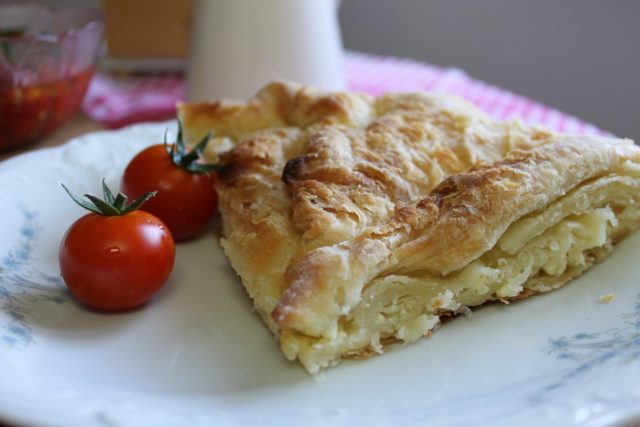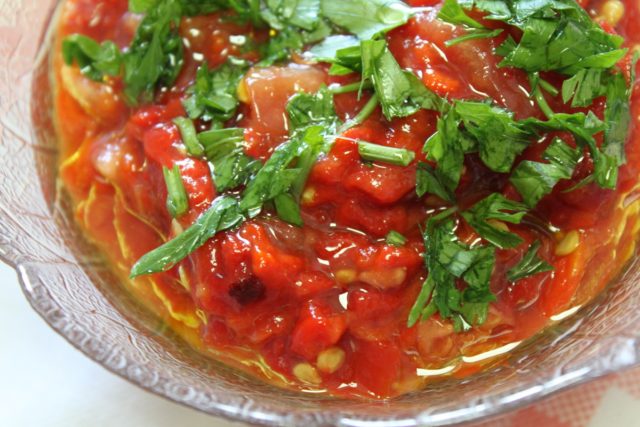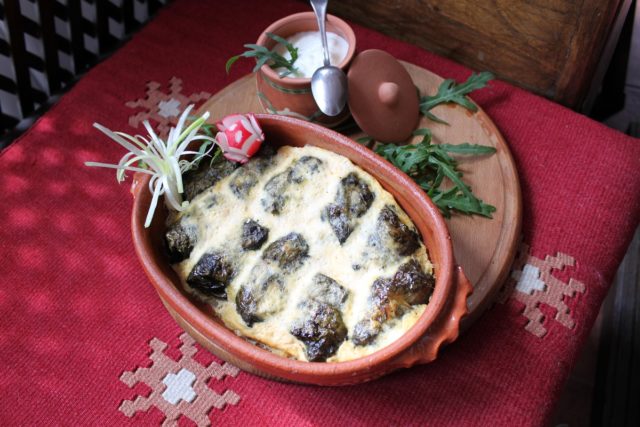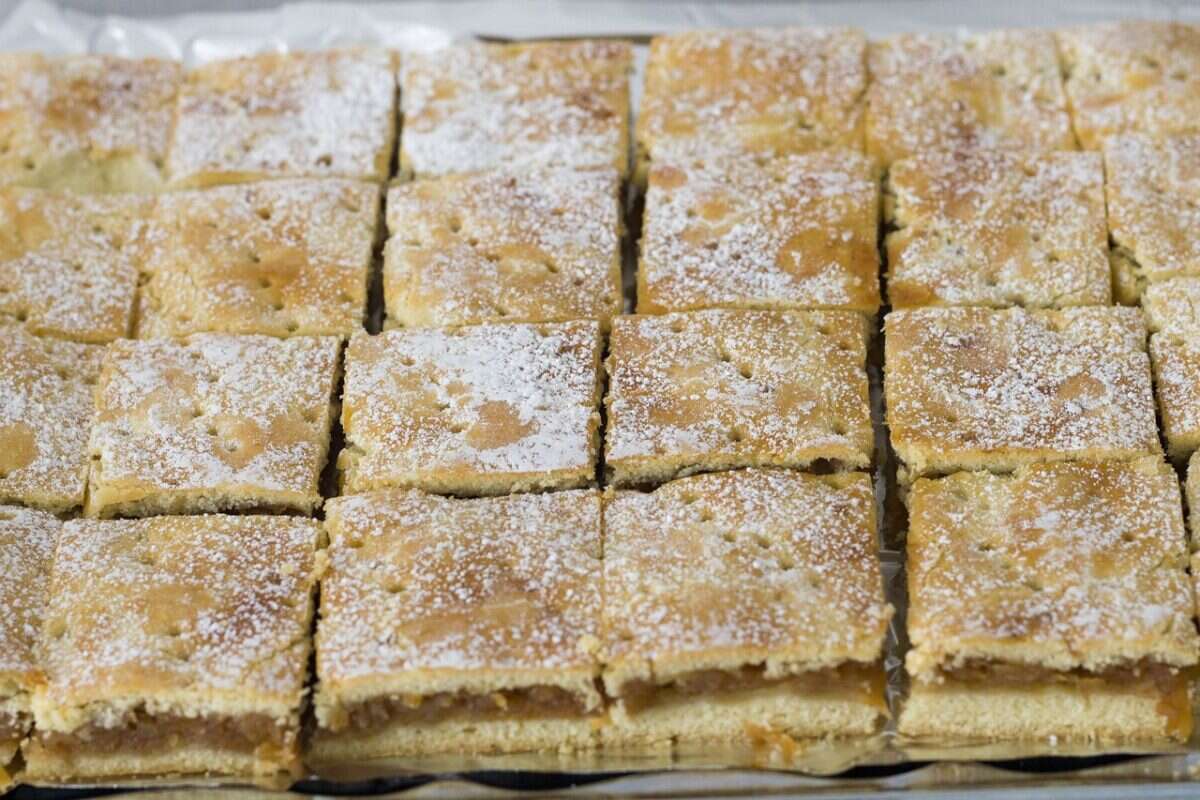Miodrag Ilić He is the founder and editor-in-chief of the Recipes and Kuvar online portal, one of the leading registered internet media in Serbia. After only two years of existence, Recipes and Cookbook online received the prestigious award called TOP 50, which ranked it among the 50 best websites in Serbia for 2015, according to the selection of the jury of the PC Press magazine. At the beginning of 2017, Miodrag Ilić on the website Recipes and Kuvar online launched a campaign to collect traditional recipes, the origin of which must be before the Second World War.
This project, unusually important for preserving the intangible cultural traditions of the people living in this region, received the institutional support of the Serbian Chamber of Commerce: "Traditional recipes of domestic cuisine are an important part of the intangible cultural heritage of every nation. In the list of elements of the intangible cultural heritage of the Republic of Serbia, in addition to old crafts, folk customs, songs and dances, as well as the naive painting of the Slovaks, there are also Belmuž, the making of Pirot cheese, Pazarske mantija (traditional preparation method). These elements are important for the preservation of national identity, but they are also an indispensable part of various tourist products. The project of collecting and promoting traditional recipes of domestic Serbian cuisine through the portal Recepti i Kuvar online and publishing a book Traditional recipes of Serbian cuisine, will introduce new elements into the tourist offer of Serbia. We also estimate that it will enable better visibility of the cultural, culinary and customary history of these areas, which will aim to better inform individuals and business entities in the country and abroad."
TELL US MORE ABOUT YOUR KNOWLEDGE AND EXPERIENCE WHEN IT COMES TO SERBIAN CUISINE.
I was born and raised in Belgrade, Serbia. I grew up surrounded by a family with a passion for cooking. My grandfather was a professional chef. Unfortunately, I never met him, he passed away before I was born. But I heard many stories about him and his passion for cooking. I like to say that I am a passionate amateur cook. For the last few years, I have been focused on traditional Serbian cuisine. It was the stories about my grandfather that made me three years ago to start the project of publishing the book Traditional Recipes of Serbian Home Cuisine.
WHAT MAKES SERBIAN CUISINE UNIQUE? HOW IS IT DIFFERENT FROM OTHER BALKAN OR EUROPEAN CUISINS?
It is different in the sense that it represents a unique collection of cultural and culinary, national and historical diversity created in previous centuries. The mixture of Turkish, Greek, Bulgarian, Hungarian and other cuisines makes it rich and distinctive.
The tradition of Serbian cuisine is very old. One of the oldest Serbian cookbooks is the Serbian cookbook by the monk of the Krušedol monastery, Jeroteja Draganović, published in 1855, in the Old Slavic language. Also, one of the most educated people who lived at the end of the 19th and beginning of the 20th century, Sima Trojanović (who was an ethnologist), published the book "Old Serbian dishes and drinks" in 1896. Such a list of old collections of recipes, cookbooks, books about customs, is very long.
The specialties of Serbian cuisine today include:
- Vojvodina is known for dough-based food, such as bread, strudel, pasta, as well as various types of processed meat.
- Central Serbia is famous for green vegetables and roasted pork.
- The specialties of western Serbia include smoked meat, while lamb is ubiquitous in mountain dishes.
- Eastern Serbia is characterized by dry shepherd's pies, lamb cooked in milk, smoked wild boar meat, janji with three types of meat and various vegetables, and Homolj kačamak.
- In the south of Serbia, very popular dishes include grilled or roasted meat, especially the famous Leskovac grilled specialties.
However, just to give an example, you can find a good zeljanica pie in all parts of Serbia.
WHAT IS YOUR FAVORITE RECIPE?
My favorite recipe is a pie, which comes from southern Serbia called prpeć (propeć, prpeč or propeć).

Here is the recipe published in my book:
Prpeć (propeć)
Region: Southern Serbia, Eastern Serbia
Period of creation: beginning of the 20th century
Photo: Miodrag Ilić
Meals: breakfast, lunch, dinner
Ingredients (for 4-6 people)
500 g of strong flour, water, 200 g of cheese (old, fatty), 125 g of fat.
Preparation: (90 minutes, baking 35-40 minutes)
Mix the flour and water and continue mixing so that the dough does not clump. Make the dough by hand, form a noodle, sprinkle a little flour on top and let it rest for 30 minutes. After half an hour, knead the dough again until it becomes smooth, form the noodles again and leave for another 30 minutes. Form the dough in the so-called juzlema (parts), i.e. roll out the dough in the shape of a circle up to 4-5 mm thick. Coat the dough with fat. From half the radius of the circle of dough, towards the outer edge of the dough, cut the dough in the shape of a flower (leave a circle in the middle, and from that circle towards the outer edge, cut 12 shapes that resemble petals). Now fold these 12 shapes towards the central, round part of the dough, each time taking the part of the dough that is opposite the previous one. When all the so-called fold the petals towards the middle of the dough and the noodle is formed, turn it over and sprinkle it with a little flour and let it rest for 20 minutes. After that, roll out the dough with a rolling pin to a thickness of 2-3 mm and a circular shape with a diameter of 40 cm. Grease a pan with a diameter of about 28 cm, put the dough on the pan so that it exceeds the edge of the pan on all sides by about 10 cm. Coat the dough with a little fat and put full-fat cheese. Now fold the outer part of the dough over the cheese, in a circle, gathering the dough. In the middle, leave a circle of about 8 cm in diameter that is not covered by the dough. Grease the upper surface of the dough in some places. Bake in the oven at 220 degrees for about 35-40 minutes, depending on the strength of the oven. When the pretzel is baked, take it out of the oven and spray the top crust with water, then cover it with a cloth to "rest" for ten minutes.
Note: In western Serbia, there was a similar dish called "gologlavica" or "zeljanica gologlava", because it was made from only one noodle filled with greens. The noodle would be placed in a pan, then filled with greens, and the ends would be turned inwards over the greens, but in such a way that the greens remained bare, uncovered in the middle, hence the name "naked head".
WHAT IS THE MOST UNUSUAL SERBIAN RECIPE?
It's hard to say. Perhaps the most unusual dish is ajvar. It is a type of salad in the category of winter salad. It is very difficult to translate ajvar into English, because such dishes do not exist in other cuisines. This dish mainly comes from southern Serbia, but every home and every family in Serbia has its own (best) recipe for ajvar.
In Serbia, we usually introduce it to foreigners with this statement: "Nothing is like homemade ajvar!" This Serbian recipe is one that you should definitely write down and know. Family and friends will thank you for it - that's for sure. And your stomach will thank you!
<strong>Preparation: </strong>
Roast the peppers, clean them and grind them in a food processor. Cut the peeled eggplant into pieces and blanch in salted water. Grind the eggplant as well. Chop the garlic. Pour oil into a pan with the largest diameter possible and heat it. Pour in the paprika and stir-fry for about half an hour. Add the eggplant and all the spices except the vinegar. If you want hot ajvar, add chopped hot peppers that you roasted or boiled beforehand. Fry the ajvar for a while longer, until you get the desired thickness. Pour the vinegar. Mix well. Pour the ajvar into sterilized jars and place in the oven/pasteurize.
WHICH FOREIGN CUISINS HAVE INFLUENCED YOUR CUISINE?
The strongest influence on me is Italian cuisine. Italy is geographically very close to Serbia, and the typical ingredients are very similar. Although Serbia is a country with no access to the Mediterranean, we can still say that Serbian cuisine is strongly influenced by Mediterranean cuisine, and a very important part of that influence is Italian cuisine.
My favorite dishes are: any kind of pasta, pizza and homemade roast beef. Ten years ago I had the opportunity to try Italian homemade roast beef, cooked in a country oven. It is very similar to roast beef or pork in Serbia, but it is also a very unique dish.
WHICH PLACES DO YOU RECOMMEND WHEN VISITING SERBIA?
If we talk about some historical and archaeological sites in our country, it is important to note that Serbia was once the home of ancient civilizations, the birthplace of 16 Roman emperors, and for a short time it was even the capital of the Eastern Roman Empire. The list must include Lepenski vir, Vinča, Felix Romuliana, Justiniana Prima and Viminacium.
For tourists who want to see the real old Serbia and try traditional food, I recommend visiting ethnic villages. The list of ethnic villages is very long and I will mention only a few of them: Terzića avlija, Drven grad or Kustendorf, Sirogojno, Rajski konaci, Sunčana reka, Tiganjica, Moravski konaci.
More about Serbia for all who are interested can be found on the official website Tourist organizations of Serbia.

BESIDES YOUR MOTHER AND GRANDMOTHER, WHICH SERBIAN BOSS HAS INFLUENCED YOU?
His name is Uroš Urošević. He is not a TV star, however, he left a big mark on the development of the cooking profession, both in Serbia and throughout the Western Balkans. Master chef Uroš Urošević is one of the most respected Serbian chefs who has been investing great efforts in culinary development and promotion abroad for years. He is the first chef from Serbia to be admitted to the most elite culinary association - the World Society of Master Chefs from London, which, thanks to numerous merits, activities and respected members, has earned the title of the most prestigious and leading international association of chefs.
WHAT ARE THE MAIN PROBLEMS FACED BY SERBIAN CUISINE?
Not only Serbia, but also the whole world is threatened by the danger that traditional ingredients, traditional dishes and traditional food preparation techniques will be forgotten. Globalization has contributed to the diversity of the food supply, but also to changes in lifestyle, the adoption of foreign food habits and the so-called "food transition" towards a simplified diet with poor nutritional characteristics.
WHAT WOULD YOU SUGGEST US IF YOU WERE PREPARING A SERBIAN MENU: APPETIZER, MAIN COURSE, DESSERT?
It is very difficult to decide! Let's say this could be my menu:
Starter: pretzel pie (I already mentioned the recipe)
Main course: green salad, together with a chopped salad (pounded pepper, mackalo). Sarmice made of greens are blanched greens, rolled, stuffed with ground beef, rice, onion, garlic, and carrot. Klucana salad is made from roasted (grilled) red peppers, crushed in a pan, together with chopped tomatoes and garlic. All ingredients must be kneaded (kneading).
Dessert: plum pie, a very tasty dessert made from pitted plums, with a little sugar added and baked in the oven.
You can find the recipes for those dishes in mine books.

Source: https://www.196flavors.com/interview-with-miodrag-ilic/








